Learn
Foreign Affairs Divide the New Nation
George Washington's Vice President, John Adams, took the reigns as President in 1796 after the first election with political parties. Adams was a Federalist and his opponent, Thomas Jefferson, was a Democratic-Republican.
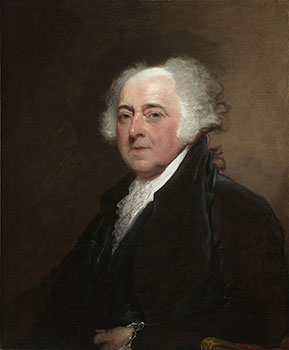

As second runner-up in the electoral votes, Jefferson became the Vice President. At this time in American government, the runner-up in the election became vice-president, meaning that Adams and Jefferson – two men from opposing parties with opposing views – would attempt to run the country together.
Adams's narrow victory (71 electoral college votes to Jefferson's 68) also showed that the nation was divided along sectional lines. Jefferson received almost all of his support from the South, while Adams received his from the North.

John Adams faced obstacles from the start including:
- attempting to fill the very big shoes of George Washington,
- governing a new nation with growing party conflicts, and
- facing the threat of war abroad.
Foreign Policy Troubles
Adams came into office with tensions growing with France, and this one foreign policy issue monopolized President Adams' time in office. The French felt betrayed after the passage of Jay's Treaty because they felt that the treaty with Great Britain was a violation of their alliance with America. In retaliation, France began attacking American ships at sea.
Upon taking office, Adams firmly resisted a possible war with France for fear that it might result in civil war at home. Like George Washington before him, Adams knew the new nation could not withstand another war. Read The Adams Presidency to learn more about problems with France.
Attempts to Avoid War
Adams tried on numerous occasions to resolve differences with France, including one attempt known as the XYZ Affair. Desperate to find resolution to the mounting tensions between the United States and France, Adams sent delegates to negotiate a settlement with France.
The negotiations with France did not go well initially. The French sent secret agents identified as X,Y, and Z to meet with our diplomats, Charles Cotesworth Pinckney, John Marshall, and Elbridge Gerry.


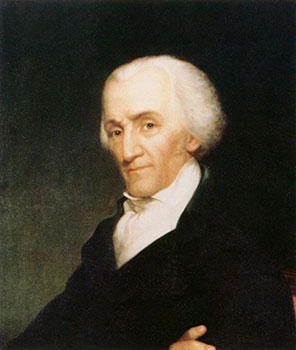
The French agents demanded a bribe of $250,000 and a loan to the French of $10 million before negotiations could begin with the French Foreign Minister, Charles Talleyrand. Bribes were commonly used in European diplomacy; however, Americans were outraged at the notion.
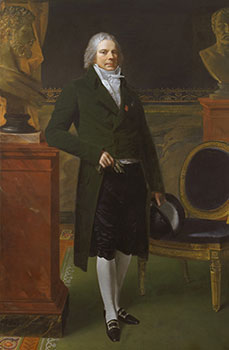
The Paris Monster
The political cartoon below was created in response to the XYZ Affair. It depicts a five-headed monster, representing the Directory that ruled France in 1797, demanding payment of a bribe from the three American representatives. Hover over the markers for more!
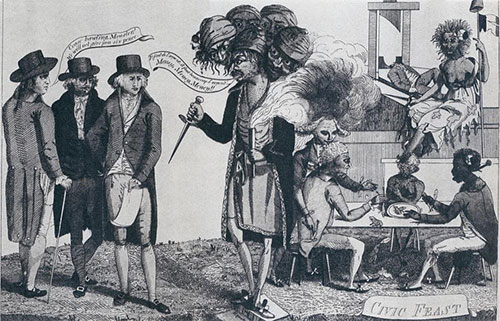
In the cartoon:
- The three men standing on the left are the American diplomats: Gerry (with the white hair), Marshall, and Pinckney. They are saying, "Cease bawling, Monster! We will not give you six pence."
- The French government is the monster with the dagger in the middle, demanding money from the Americans. This cartoon is titled "Cinque têtes or the Paris Monster". Cinque têtes means "five heads" in French. The monster is saying, "Il faut de l'argent, il faut beaucoup d'argent" (which means "It takes money, it takes a lot of money") followed by "Money, Money, Money" in English.
- On the top right, the tattered person and French flag in the background at the guillotine represents the horrors of the French Revolution.
- On the side, frogs are jumping around the Frenchmen, including on a plate in front of them.
- The Paris Monster is standing on a book labeled "Equity".
Quasi-War
Our diplomats returned home to public cries for war and anti-French sentiment in America. The American war cry was, "Millions for defense, but not one cent for tribute." Congress and US military forces, each anxious to respond, began organizing attacks on French vessels.
By 1798, The US and France were in an undeclared war that became known as the "Quasi-War." Although a formal war was not declared, for two years, there was an undeclared naval war between France and the United States. To better prepare, Adams asked Congress to authorize a major expansion of the navy. Congress authorized a 10,000 man army and a moderate expansion of the navy, which at the time consisted of one unarmed custom boat. Due to his support for the expansion of the navy and the creation of the United States Department of the Navy, Adams is "often called the father of the American Navy".

Adams sent a second diplomatic mission to France in November 1799 that considerably calmed tensions. By the end of his first term, Adams successfully brought an end to the tension. The Convention of 1800, signed on September 30, 1800, officially ended the Quasi-War. Adams had kept the United States out of a war it did not need. Avoiding this potentially damaging war was perhaps his greatest contribution while president.
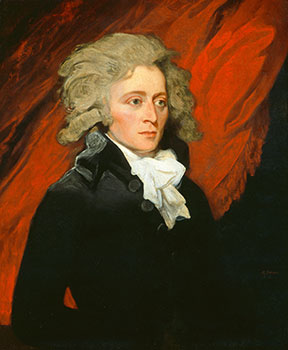
Alien and Sedition Acts
The tension with France spilled over into Adams' domestic policy. Because of the suspicion surrounding the French and the possibility of French spies in America, Adams supported the passage of the Alien and Sedition Acts. These acts increased the residence requirement to be an American citizen and set fines and jail time for anyone making anti-government statements. They targeted foreign persons living in the United States, as well as the political opponents of government officials, which were mainly Democratic-Republicans at this time. Anyone who wrote, published, or said anything that criticized the government or its officials could be fined or jailed. Can you imagine being jailed for saying something negative about a politician?
As you might imagine, Adams's support of the Alien and Sedition Acts virtually ruined his chances for re-election.
Political Tensions Increase
With limits on the freedom of speech in place, the Federalists hoped to silence their opposition. The attempt proved to be successful at first. However, many Americans became cynical of the Federalists' abuse of power and Adams's support of it.
Thomas Jefferson, James Madison, and other Republicans fought back by supporting the Virginia and Kentucky Resolutions which provided the right of nullification, or a state's right to declare a federal law "null and void" or unconstitutional. This essentially means that a state could refuse to obey any act that they felt violated the Constitution. This issue of nullification created a new debate over whether the states should have more power than the federal government.
Read The Alien and Sedition Acts to learn more about the controversy.
Slight Easing of Tensions
Washington died in 1799 and Napoleon Bonaparte, the first consul of France, ordered 10 days of mourning. This began to improve America's relationship with France at the turn of the 19th century.
Election of 1800
Instead of muting the Democratic-Republican Party, the Alien and Sedition Acts actually helped lead them to a victory in the election of 1800. Because Americans were still angry, John Adams had a difficult time running for re-election. In fact, this election was called the "Revolution of 1800" due to its extremely negative and nasty campaign.
The map shows the electoral votes in the election of 1800. In this election, Federalist John Adams and Democratic-Republican Thomas Jefferson competed to lead the nation. Partisan feelings between Federalists and Democratic-Republicans were so strong that no candidate received a majority in the Electoral College.

The election was thrown into the House of Representatives for the final decision. Alexander Hamilton convinced several Federalists to cast votes for Jefferson (who had won the popular vote, if not the majority of electoral votes). Therefore, Jefferson was declared the third president of the United States.
Aaron Burr, who also ran for president, tied with Jefferson in the electoral vote. He was named vice president.
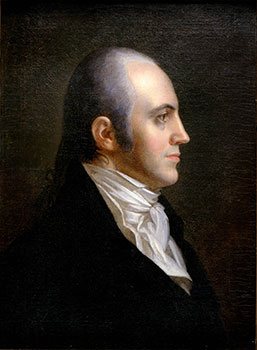
This confusion led to the passage of the 12th Amendment to the Constitution, which requires electors to cast separate ballots for president and vice-president.
Read The Election of 1800 to learn more about the election.
Adams's Lasting Legacy
Shortly before leaving office, Adams attempted to impact the legacy he would leave on the country by appointing a series of Federalist officials to the judiciary. Adams used his remaining weeks in office between losing the election to Jefferson (a Democratic-Republican who believed in a smaller role of government than the Federalists) and ending his term in office to appoint judges who held strong Federalist views.
These end-of-term appointments became known as midnight judges. These officials helped to shape the future of the young nation with their emphasis on a strong national government.
However, it was the appointment by Adams of John Marshall as Chief Justice of the Supreme Court in January 1801 that would have the most profound impact. Marshall served as Chief Justice for 34 years, and it was under his guidance that the Supreme Court and judicial branch finally achieved the same level of power that the executive and legislative branches of government had.
Additional Resources
Read the following if you would like to learn more about these topics: